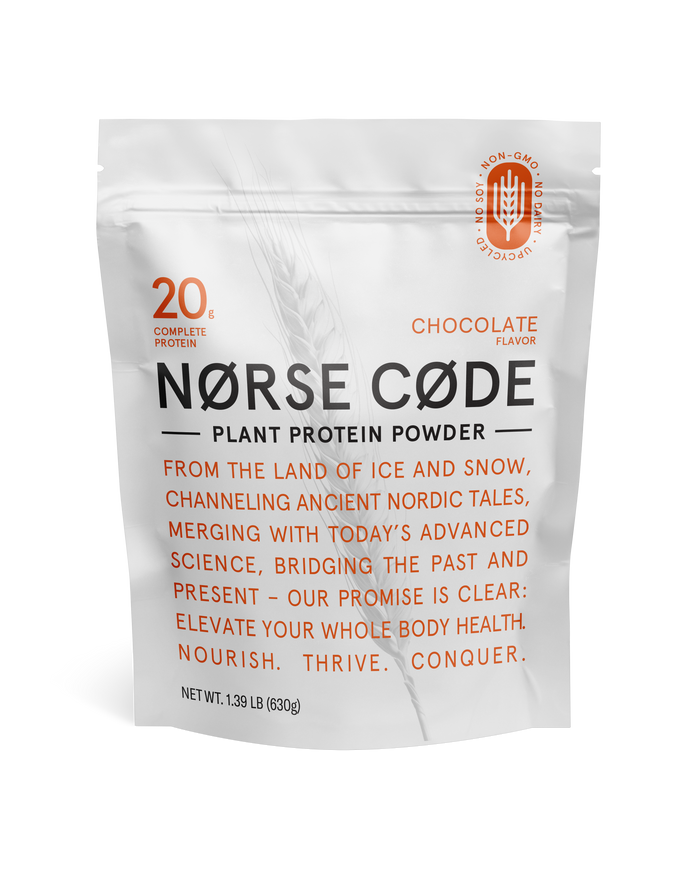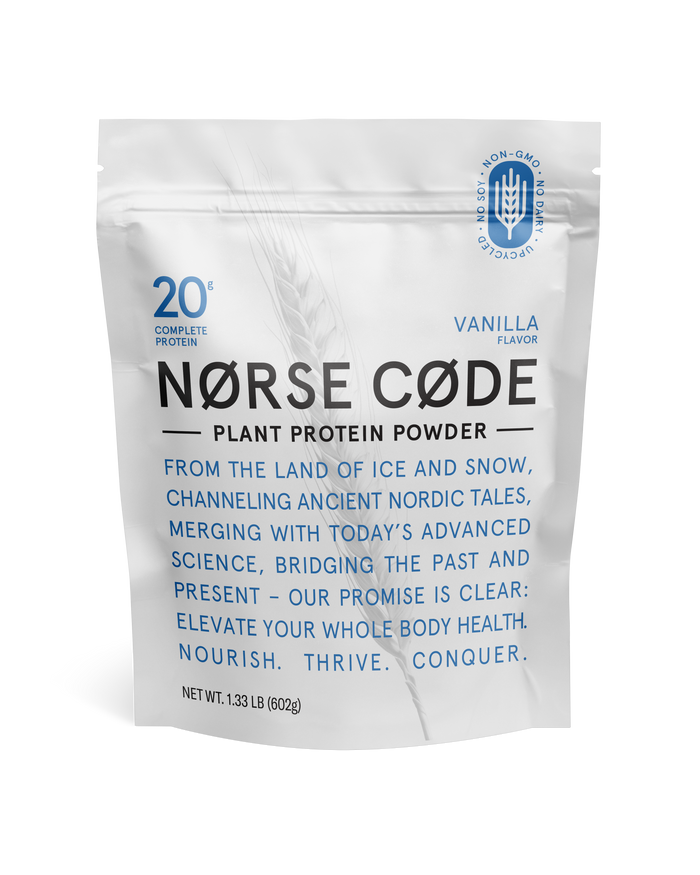
Clean Protein, Stronger Planet: Your Guide to Sustainable Supplements
Modern warriors demand more from their protein—49% of global consumers cite sustainability as a top priority when choosing food and beverages. With protein powder sales expected to reach $15.6 billion by 2026, the stakes are high: every scoop you choose shapes our planet’s future. Some brands help tackle the 133 billion pounds of food wasted annually; others continue straining the environment.
How do you find a sustainable option that truly delivers? This guide cuts through the noise, revealing key facts about sustainable protein powders—no fluff, just the info that matters for your body and our world.
Why Sustainability Matters: A Warrior’s Choice
Every purchase you make sends a message. With rising demand for sustainable protein powders, brands must decide whether they’ll fight food waste (like repurposing barley or other byproducts) or fall short and strain the environment further. For active individuals—modern warriors—it’s crucial to choose a protein that supports your performance goals and the planet’s future.
- Sustainable Impact: By opting for cleaner processes, some protein brands are reducing greenhouse gases by as much as 97% compared to traditional methods.
- Battling Food Waste: About 133 billion pounds of food gets tossed yearly. Upcycling these resources for protein helps cut that number.
Key Insight: Your protein footprint matters—especially if you’re using shakes or meal replacements daily. It’s not just about your gains; it’s about global gains in resource conservation.
Fuel Your Strength: Understanding Clean Protein
The Clean Protein Standard
“Heavy metal contamination is a global food safety problem. These contaminants are basically everywhere—even in foods labeled as ‘healthy.’”
— Jaclyn Bowen, Executive Director of the Clean Label Project
True strength starts with knowledge. Today’s warriors require more than amino acids; they need clean, sustainable fuel that supports performance and respects the planet. A clean protein standard means:
- Minimal additives and contaminants
- Transparent sourcing
- Responsible water and land use during production
Protein Options in Your Arsenal
At NØRSE CØDE, for example, you might see a lineup like:
- Whey Protein: Born from cheese production, it often reuses a byproduct that might otherwise go to waste.
- Plant Power: Pea, hemp, and rice proteins can provide muscle strength with fewer resources.
- Future Fuel: Advanced fermentation is creating identical proteins without animal inputs.
Planet Power: Environmental Truths About Protein Sources
Numbers don’t lie. Your protein choice affects our planet’s future. Let’s explore how different sources stack up.
Carbon Footprint
- Plant Power: Plant-based protein can cut greenhouse gas emissions by 4x to 7x compared to traditional dairy-based protein.
- Whey: Often considered somewhat eco-friendly since it repurposes leftover cheese production.
- Advanced Processes: Some innovative brands reduce emissions by 98% compared to conventional methods.
Water Warriors
Dairy-based protein can demand 2,540 liters of freshwater for every 100 grams of protein. Certain plant-based alternatives cut water use by up to 99%. The difference is huge when you scale it globally.
What Affects Water Use?
- Source ingredients (peas vs. dairy)
- Production scale and location
- Processing technology
Land Legacy
We have only 1.5 billion hectares (about 12% of global land) feeding the entire world. Animal proteins claim a large share, especially in the EU, which dedicates two-thirds of farmland to livestock. Meanwhile, sustainable protein sources slash global farmland use by up to 95%, thanks to more efficient crop cultivation or fermentation methods.
Takeaway: If you want to fuel your strength without draining the planet’s resources, a clean or plant-forward protein choice can be a strong move.
Battle of the Proteins: Plant vs. Whey
Ancient Nordic warriors knew that strength comes from wise choices. Today’s protein debate is no different. Let’s compare the basics:
| Warrior Fuel | Whey Protein | Plant Protein |
|---|---|---|
| Protein Power | ~20–30 g per serving | ~20–30 g per serving |
| Amino Acid Profile | Complete (all 9 essential AAs) | Varies by source (can be complete with right combos) |
| Digestibility | High (especially if processed gently) | Moderate to High (depends on source & formulation) |
| Extra Benefits | Limited micronutrients | Often richer in vitamins, minerals, and fiber |
Whey is highly digestible and covers all essential amino acids. However, well-crafted plant proteins (e.g., pea + rice) can match that amino acid strength while requiring fewer environmental resources [5]. As global demand for whey rises by 10% yearly, plant-based alternatives keep gaining traction for their land and water efficiency.
Choosing Clean: Your Guide to Sustainable Protein
“The brightest perspective of this study is that one protein powder tested completely free of contaminants. Consumers could send a powerful message by shifting their buying preferences to that brand.”
— Terrence Collins, Teresa Heinz Professor of Green Chemistry
Trust the Label
NØRSE CØDE aims for transparency via:
- Source-tracked ingredients
- Rigorous quality testing
- Reduced carbon footprint
Production Power
Clean production shapes environmental impact. Organic certification ensures no synthetic fertilizers; grass-fed claims prove more natural feeding practices.
| Clean Standard | Sustainable Proof |
|---|---|
| Pure Ingredients | Organic, grass-fed, or plant-based sources |
| Smart Processing | Minimal steps, energy-efficient tech |
| Resource Smart | Water-saving measures, renewable power |
| Supply Strong | Local sourcing, fair labor practices |
Package Smart
Packaging choices also affect a product’s eco footprint. Paper bags, ironically, can generate 4x more greenhouse gases than standard plastic. Some brands are opting for:
- HDPE plastic pouches (often more eco-friendly than glass or bioplastics)
- Plant fiber pouches that decompose naturally
- Aluminum containers for easy refills and less waste
Goal: 100% recyclable, reusable, or compostable packaging by 2030.
Tomorrow’s Protein: Science Meets Nordic Wisdom
The quest for clean protein is accelerating. The alternative protein market is expected to grow by 15.8% yearly, hitting $1.2 trillion by 2030.
Science Powers Forward
Precision fermentation leads the charge. Microorganisms craft proteins identical to animal products. Solein from Solar Foods, for example, needs 100x less water and 20x less land than typical plant protein. Meanwhile, cell-cultivated muscle stem cells cut greenhouse gases by 88% compared to beef.
GreenProtein extracts RuBisCo from field waste, while local “smart grids” can reduce transport emissions. Each breakthrough helps refine the future of clean, environmentally responsible nutrition.
Nature’s New Protein Arsenal
Thanks to ancient Nordic wisdom, we understand nature’s bounty. Spirulina and chlorella algae boast 70g+ of protein per 100g and are close to being carbon-neutral. Meanwhile, lab-crafted dairy proteins or upcycled brewing waste unlock yet more potential.
| Source | Protein Power (per 100g) | Earth Impact |
|---|---|---|
| Solein | ~75g | ~10% of regular plant footprint |
| Spirulina | >70g | Carbon-neutral possibilities |
| Insects | Varies | Minimal resource needs |
Innovation helps brands lower costs and improve taste—key to widespread adoption of these novel proteins [29]. Nordic countries, like Denmark and Norway, are investing millions in plant-based or cellular agriculture to reshape our food future.
Why Your Choice Matters
Clean protein powers tomorrow’s strength. We’ve seen how plant-based options can slash emissions by 7x compared to traditional sources, and how precision fermentation might go even further.
- Demand More than Labels: Seek certifications, lab tests, and brand transparency.
- Align with Eco Values: Whether it’s upcycled barley or advanced fermentation, your choice shapes the industry’s trajectory.
- Support Cutting-Edge Innovation: Every time you pick a sustainable brand, you encourage continued research and development in green nutrition.
Remember, your protein shapes more than your muscle; it influences our planet’s health. Ancient Norse wisdom taught balance—today’s warriors continue that legacy with each conscious purchase.
Author’s Note
Clean protein fuels our present and shapes our planet’s future. At NØRSE CØDE, we combine Nordic heritage with modern science to bring you bold, sustainable performance nutrition. Choose wisely—your strength and our earth depend on it.
NØRSE CØDE Chocolate Plant Protein Powder
- Regular
- $44.50
- Sale
- $44.50
- Regular
-
- Unit Price
- per
NØRSE CØDE Vanilla Plant Protein Powder
- Regular
- $44.50
- Sale
- $44.50
- Regular
-
- Unit Price
- per
NØRSE CØDE Stainless Shaker
- Regular
- $35.00
- Sale
- $35.00
- Regular
-
- Unit Price
- per




